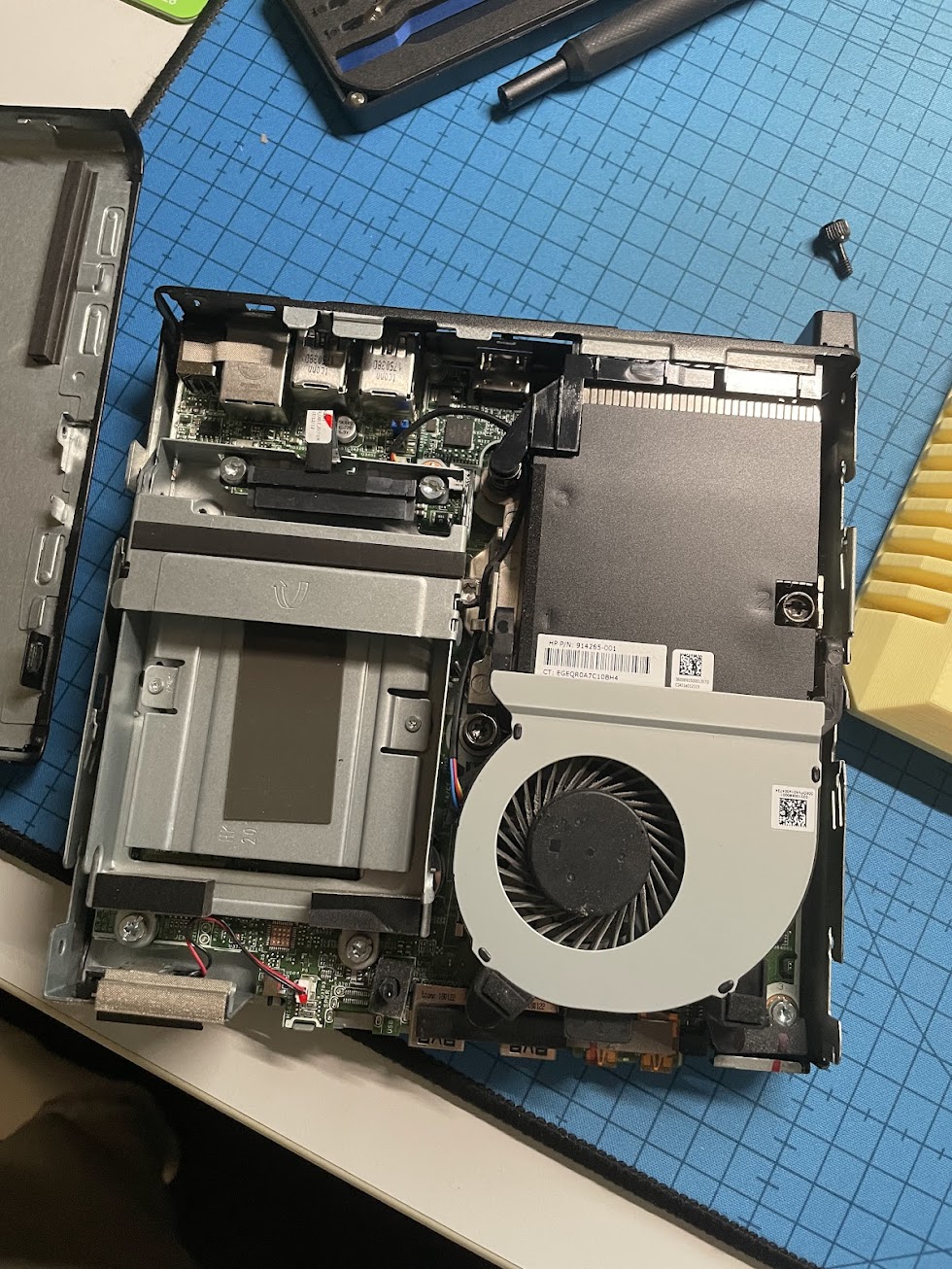Mini-PC Home Server Guide
If you want a home server where you can host services and websites, using—for example—an old mini PC, you can follow these steps. At Well Gedacht Publishing, we use an old HP Prodesk 400 G3 Mini we bought off Kleinanzeigen for around 40 bucks (€). These mini PCs are relatively easy to find for cheap online because they were used widely by companies that bought them in large quantities. After their corporate owners renew them, most of these old but perfectly capable PCs end up on websites like eBay. The main advantage of these mini PCs for enterprise use is that they consume low energy when idle. We installed Proxmox on it and then used a Debian Linux virtual machine to run Docker containers for various self-hosted services, applications, and websites.
We compiled this guide using a bunch of different guides found online, which we linked in this article. There are many well-put-together guides on self-hosting, Docker, Nginx Proxy Manager, etc. Still, the majority of them focus on making your self-hosted services accessible online, for example, making a Jellyfin or a Guacamole server remotely accessible online. Since we used different how-to guides to accomplish what we wanted, we decided to document our process, and make a single guide out of several available.

First of all, this is a list of what we currently self-host on this HP Mini-PC:
- This wiki, which uses DokuWiki
- BookStack: another wiki software which we use as a collaborative note-taking tool
- WriteFreely: Open source blogging and publishing with federation support
- Listmonk: Open source newsletter
- wallabag: Save and read it later
- Hoarder: Fancy bookmarking tool
- Nginx Proxy Manager: Reverse proxy manager for opening your self-hosted applications and sites to the internet
- Jelu: Book tracker and a tool to create to-read lists
- a few self-hosted websites
Other self-hosted services we use on a separate device (a network-attached storage with a 12th gen Intel N100 CPU):
- Jellyfin: media server
- PhotoPrism: tool for backing up photos, a self-hosted Google Photos or iCloud alternative
- qBittorrent: BitTorrent client
- Soulseek: Peer-to-peer file sharing

This guide is under construction. 